Subject: EDQ #13 - Creating Crosswords
Posted by: spanishliz
Date: Sep 28 18
EDQ #13 – Creating Crosswords
Crossword creation may seem daunting, hard, and tedious, but I'm here to help you out with that. I'd like to use this post to give a few tips for creating crosswords, making them symmetrical and writing clues to fit themes. Crossword creation should be fun and the aim here is to give you, the author, some tools and tricks to make it so.
STARTING
My own method for starting a puzzle varies, but the most successful one has been to use graph paper and make a word list, arranged by word length. It is possible to write your puzzle directly in the template, but having an idea of what words you want to use (especially for themed puzzles) is always helpful.
THE GRID
When starting from scratch, one good way to begin, when aiming for symmetry, is to take one of your longer words and place it across the centre of the grid. This word must have an odd number of letters, with the middle letter of the word being placed on the centre square of the grid. Once that word is in place, it is easier to enter crossing words going both up and down from that starting point. (Note that I got this idea from a documentary film about crossword creation, when it was suggested by a pro crossword compiler.) If attempting symmetry, I find it best to 'mirror' my work. For example:
Enter CROSSWORD as the starting word, going across, with the second S on the middle square.
Your next move could be to place CRYPTIC going down, with the final C crossing the C of CROSSWORD. You would then look for a seven letter word beginning with D to run down from the D of crossword, and continue in this fashion. You might not be able to use all of the words on your list, and you will probably have to go to a dictionary or thesaurus (either hard copy or online) to finish your puzzle, but working out the grid this way can be a lot of fun.
You might also want to find a standard grid that you like, and simply fill words into it, and that is fine too, but to my mind not so much fun.
CLUES
For the most part, clues should be concise, but you can have fun with these too. Simple word play is OK in any puzzle, and can make for more interesting clues. (Fully cryptic puzzles should, of course, be submitted to Brain Teasers.) We ask that you avoid giving away any part of your answer in the clue, to ensure the puzzle is challenging for the player. For example:
The word to go in the grid is the abbreviation ONT. A clue that would be rejected is “Short for Ontario”, because there is no challenge there, the answer is in the clue. Acceptable clues would be “Toronto's province (abbr.)”, “Once known as Upper Canada (abbr.) and “Province that borders four of the Great Lakes (abbr.)”. For any of these the player has to think a bit, yet should be able to arrive at the answer. Notice that in each case there is some indication that the answer word is abbreviated.
THEMED PUZZLES
Most of the crosswords at FunTrivia are filed under General, and it is probably true that general knowledge puzzles are easier to write, at least at first, than are themed puzzles. There are a few tips that I can give, however, to let you have fun creating a themed puzzle.
First, not every word in the puzzle needs to follow the theme. It's fine to use words that are either slightly off topic or simply generic. That said, there are ways to make many words fit your theme.
Take the word AND for example as the word in your grid. You could go with a simple clue like “Conjunction” and that would be fine, for any topic. Some examples of clues for themed puzzles:
Celebrities: Comedy duo, Abbott ___ Costello
Canadian Literature (to narrow the theme): Farley Mowat title: “___ No Birds Sang”
Sports: Blue Jays team colours: Blue ____ white
Geography: West Indian nation: Trinidad ___ Tobago
Similar things can be done for most topics, and for all kinds of words.
If you want to try a themed puzzle, picking a topic that you enjoy and are enthusiastic about can make the creative process more enjoyable. Choosing the smallest grid size might also be a good idea, especially when starting out.
CONCLUSION
I was going to go on about just “why” we ask for a certain number of crossing words and other technicalities of puzzle creation, but I thought perhaps I would leave that and throw this open for your questions. Feel free to ask anything, including for the “why” and we'll answer to the best of our ability.
Posted by: spanishliz
Date: Sep 28 18
EDQ #13 – Creating Crosswords
Crossword creation may seem daunting, hard, and tedious, but I'm here to help you out with that. I'd like to use this post to give a few tips for creating crosswords, making them symmetrical and writing clues to fit themes. Crossword creation should be fun and the aim here is to give you, the author, some tools and tricks to make it so.
STARTING
My own method for starting a puzzle varies, but the most successful one has been to use graph paper and make a word list, arranged by word length. It is possible to write your puzzle directly in the template, but having an idea of what words you want to use (especially for themed puzzles) is always helpful.
THE GRID
When starting from scratch, one good way to begin, when aiming for symmetry, is to take one of your longer words and place it across the centre of the grid. This word must have an odd number of letters, with the middle letter of the word being placed on the centre square of the grid. Once that word is in place, it is easier to enter crossing words going both up and down from that starting point. (Note that I got this idea from a documentary film about crossword creation, when it was suggested by a pro crossword compiler.) If attempting symmetry, I find it best to 'mirror' my work. For example:
Enter CROSSWORD as the starting word, going across, with the second S on the middle square.
Your next move could be to place CRYPTIC going down, with the final C crossing the C of CROSSWORD. You would then look for a seven letter word beginning with D to run down from the D of crossword, and continue in this fashion. You might not be able to use all of the words on your list, and you will probably have to go to a dictionary or thesaurus (either hard copy or online) to finish your puzzle, but working out the grid this way can be a lot of fun.
You might also want to find a standard grid that you like, and simply fill words into it, and that is fine too, but to my mind not so much fun.
CLUES
For the most part, clues should be concise, but you can have fun with these too. Simple word play is OK in any puzzle, and can make for more interesting clues. (Fully cryptic puzzles should, of course, be submitted to Brain Teasers.) We ask that you avoid giving away any part of your answer in the clue, to ensure the puzzle is challenging for the player. For example:
The word to go in the grid is the abbreviation ONT. A clue that would be rejected is “Short for Ontario”, because there is no challenge there, the answer is in the clue. Acceptable clues would be “Toronto's province (abbr.)”, “Once known as Upper Canada (abbr.) and “Province that borders four of the Great Lakes (abbr.)”. For any of these the player has to think a bit, yet should be able to arrive at the answer. Notice that in each case there is some indication that the answer word is abbreviated.
THEMED PUZZLES
Most of the crosswords at FunTrivia are filed under General, and it is probably true that general knowledge puzzles are easier to write, at least at first, than are themed puzzles. There are a few tips that I can give, however, to let you have fun creating a themed puzzle.
First, not every word in the puzzle needs to follow the theme. It's fine to use words that are either slightly off topic or simply generic. That said, there are ways to make many words fit your theme.
Take the word AND for example as the word in your grid. You could go with a simple clue like “Conjunction” and that would be fine, for any topic. Some examples of clues for themed puzzles:
Celebrities: Comedy duo, Abbott ___ Costello
Canadian Literature (to narrow the theme): Farley Mowat title: “___ No Birds Sang”
Sports: Blue Jays team colours: Blue ____ white
Geography: West Indian nation: Trinidad ___ Tobago
Similar things can be done for most topics, and for all kinds of words.
If you want to try a themed puzzle, picking a topic that you enjoy and are enthusiastic about can make the creative process more enjoyable. Choosing the smallest grid size might also be a good idea, especially when starting out.
CONCLUSION
I was going to go on about just “why” we ask for a certain number of crossing words and other technicalities of puzzle creation, but I thought perhaps I would leave that and throw this open for your questions. Feel free to ask anything, including for the “why” and we'll answer to the best of our ability.
15 replies. On page 1 of 1 pages. 1
moonraker2 


|
Thanks for taking time to draft these guidelines spanishliz, they will certainly prove valuable to those venturing into the compilation of crosswords. I agree that crossword creation should be fun, and it is also very rewarding when successfully completing a grid. With reference to starting a puzzle, I personally prefer to use a suitable copy of a grid taken from a daily newspaper. These are plentiful in the UK and are without exception symmetrical, which suits me personally. This of course avoids the need to craft a grid from scratch, which others may prefer? I will always start filling the grid with the longest answers, as it is then usually easier to fill in with the shorter answers. It's also perhaps advisable to keep the use of certain letters such as Q X Z to a minimum as these are more difficult to match up on crossing answers. When using such letters it's sensible to place them in the grid in a non crossing square. Without doubt it's easier to compile a general crossword compared to a themed puzzle, but general crosswords do not need to be bland. Rather than simply entering words from a dictionary, the general puzzle can consist of a wide mix of countries, scientists, movies, sportsmen etc etc making the whole experience that much more interesting. There are also a number of on-line dictionaries providing word search facilities enabling you to find an elusive word to fit a given pattern. For example by entering B?L???A into OneLook Dictionary, it gives a number of possible answers fitting that pattern. Once again thanks for your guidelines spanishliz, and apologies for my ramblings. Reply #1. Sep 29 18, 10:06 AM |
Fifiona81

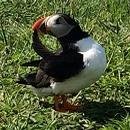
|
Whether building a grid from scratch or trying to fit words into an existing symmetrical grid, I find it easiest to set up a spreadsheet with the cells sized to look like squares. It makes it that much easier to delete and start again if things don't work out compared to working with pen and paper. Reply #2. Sep 29 18, 11:05 AM |
agony

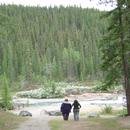
|
I'm pretty old school - when I started writing crosswords back in high school for the school paper I used graph paper and a pencil (so I could erase) and that's what I used for my few FT crosswords. Reply #3. Sep 29 18, 11:20 AM |
CmdrK 

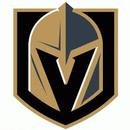
|
One of the perks of Gold membership is being able to download a crossword as a PDF to work on offline. When I find a grid I like I download the puzzle and can then print out the grid and modify it by hand if I want to. After my crossword with a modified grid goes online I download it and it's ready for the next use. Reply #4. Sep 29 18, 12:44 PM |
kyleisalive

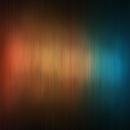
|
Re: "For example by entering B?L???A into OneLook Dictionary, it gives a number of possible answers fitting that pattern." Agreed! There are a few great resources along these lines. Reply #5. Sep 29 18, 3:33 PM |
pollucci19 


|
I found this site very helpful... use the crossword solver option. Similar to Moonraker's option, it allows you to nominate the number of letters and fill in the ones that you already have https://www.wordfind.com/ Reply #6. Sep 30 18, 6:20 PM |
windrush 


|
I'm with Fifiona - I've used spreadsheets setting up my grids. I find if I number the outside of the grid on the left and top, say 1 to 15, then reverse those numbers for the right side and bottom (15 to 1) it is much easier to be sure the grid is symmetrical (ie. 1 across will use squares 1-10, then starting in the bottom right corner working left 1-10.) Works for me, anyway. Reply #7. Oct 16 18, 5:06 AM |
leith90 

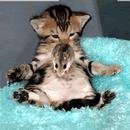
|
I'm definitely old school and use the grid books with the 7mm squares. Once I decide what style my CW is to be, I mark out my grid and shade in where the blanks will go. I construct my CW in pencil and once it's complete I then make a list of the clues. I now have a pile of grid books with all my CWs in. Reply #8. Nov 25 18, 4:06 PM |
Creedy 

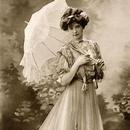
|
Oh gosh, I don't do any of these things. I just pull up the template size I want and then have a lovely relaxing time working around it. If one clue doesn't work eventually, I just give it the flick and think of another instead. However, this sort of approach is not the best I imagine. Too much of a rugby league mentality where you just barge on through. It lacks finesse, but suits me just fine. Reply #9. Dec 01 18, 6:22 PM |
Creedy 


|
I like CmdrK's idea though. Might try it one day. Some writers have come up with excellent designs in the crosswords on this site. Reply #10. Dec 01 18, 6:28 PM |
1nn1


|
I write this as a crossword author not and editor. I have written asymmetrical and symmetrical crosswords to date but I made a pact to myself after I had seen both sides of the fence so speak, I would always use symmetrical grids (Please note this is not a FT requirement, but a personal one. Similarly I do not allow myself to use two letter words). I usually have a list of words I want to use in the crossword. No More than 8-10. I have found that any more makes it really difficult. I write these out and see how they might fit together or not and choose an appropriate grid. Authoring a crossword is no different to writing a song. Which do you write firrst the music or the lyrics? It does not matter, neither are wrong. How those words fit together informs me which sort of grid to use. In the past I have designed my own, used national newspaper grids, uses other FT authors grids (usually with permission but I cannot say that with certainty for all borrowed grids) and sometimes modifying another person's grid. Once I have chosen my grid, it becomes locked in If I cannot make a chosen word fit I discard the word. With symmetrical grids if you make a change to one square, there will be another corresponding square to modify diagonally opposite. One thing I never lose sight of - It not the words that make the crosswords, it's how the words fit together. The meaning of the word is secondary to the construction of the word I started with excel and have a library of grids now that are over 30. On Occasion I have printed out a crossword from FT and used the blank grid as the template.- with these I use a pencil. If the CW goes on line, I draw and save that grid in Excel. I start with the longest words and start placing them in the grid. I work from the middle out. The grid chosen will fit the major worrds I have chosen. The rest of the words chose will be governed by the grid whether themed CW or not. With clues I like to use humor and wordplay in the clues. Humour is difficult at times as there is no uniform sense of humour so what is funny to me might not be to you. Also my Aussie sense of humour tends to be dry so sometimes this goes over the heads of some people. I like wordplay as it introduces a bit of fun and it helps preparing you for cryptics. The other thing I tend to do is offer alternative clues. If the clue is fairly obscure I will give a second alternative so sometimes you can leverage of both to figure out the correct clue. I use this a lot in People CWs. There are a couple of other points I would like to make about clues but that's with my editor had so I will close this one and open a new thread Reply #11. Dec 01 18, 9:41 PM |
1nn1


|
I am speaking with my editor hat on now. With clues it is important to be consistent. If you have an easy crossword and come acorss a clue that says "IATA Airport Code for Sadah, Yemen), this is going to throw everything out the window as that clue will probably need some research (The answer is SYE) whereas the IATA code fr Sydney is as anticipated SYD) IATA codes are used a lot to get the rest of the words chosen to fit. It is not ideal. A better way would be 'unpick' a few clues so you were not having to use obscure words at the end Reply #12. Dec 01 18, 9:47 PM |
CmdrK 


|
"Too much of a rugby league mentality where you just barge on through." Or Klingon. ;) Reply #13. Dec 01 18, 11:49 PM |
Creedy 


|
Lol! Reply #14. Dec 02 18, 2:40 AM |
Godwit 


|
Just learning how to do symmetry and grateful for all of this experienced advice. :) Reply #15. Jan 06 20, 11:25 AM |
15 replies. On page 1 of 1 pages. 1
Legal / Conditions of Use
|
|
 :
: